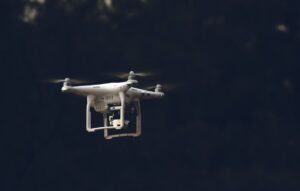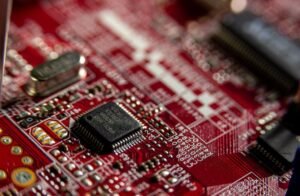AI Software Stack: Understanding the Building Blocks of Artificial Intelligence
Artificial Intelligence (AI) has become an indispensable part of our lives, transforming industries and reshaping the way we interact with technology. Behind the scenes, an AI software stack provides the foundation for creating and deploying intelligent applications. Understanding the components and layers of this software stack is crucial in harnessing the power of AI. In this article, we will explore the key building blocks that make up the AI software stack.
Key Takeaways:
- AI software stack is a collection of tools, frameworks, and libraries used to develop AI applications.
- It consists of several layers, including data acquisition, data preparation, model training, and model deployment.
- Open-source frameworks like TensorFlow and PyTorch simplify the development of AI applications.
- The AI software stack allows for the integration of various AI technologies, such as machine learning, natural language processing, and computer vision.
- AI software development requires expertise in programming languages like Python, R, or Java.
Data Acquisition: The first and crucial step in the AI software stack is acquiring relevant data. This can involve collecting data from various sources such as databases, APIs, or web scraping. Without quality data, AI models cannot provide accurate results.
Data Preparation: Once the data is acquired, it needs to be preprocessed and cleaned to ensure consistency and remove any noise or irrelevant information. This involves tasks like data normalization, feature extraction, and handling missing values. Data preparation significantly impacts the performance of AI models.
Model Training: In this phase, ML algorithms are applied to the prepared data to train the AI models. Popular open-source frameworks like TensorFlow and PyTorch provide developers with high-level APIs and libraries to efficiently build and train machine learning models. Model training is an iterative process that fine-tunes the model parameters to improve accuracy.
Model Evaluation: After the training phase, the performance of the AI model needs to be evaluated to determine its effectiveness. Metrics such as accuracy, precision, recall, and F1 score are commonly used to assess the model’s performance. Evaluation helps identify areas for model improvement and fine-tuning.
Model Deployment: Once the model is trained and evaluated, it can be deployed to production environments and integrated into applications. This step involves optimizing the model for efficient inference, creating APIs or services for interaction, and ensuring scalability and reliability. Model deployment is the bridge between AI development and real-world applications.
AI Software Stack Components:
Table 1: Overview of AI Software Stack Components
| Component | Description |
|---|---|
| Data Acquisition | Collecting relevant data from various sources. |
| Data Preparation | Preprocessing and cleaning the acquired data. |
| Model Training | Applying ML algorithms to train the AI models. |
| Model Evaluation | Evaluating the performance of trained AI models. |
| Model Deployment | Optimizing and deploying AI models into production. |
Integration of AI Technologies: The AI software stack allows for the integration of various AI technologies, each serving different purposes. Machine learning enables the AI model to learn patterns and make predictions based on data. Natural language processing empowers AI to understand and process human language, enabling chatbots and language translation. Computer vision enables AI systems to interpret and understand visual data, enabling facial recognition and object detection. The combination of these technologies widens the possibilities of AI applications.
Programming Languages: AI software development often relies on programming languages that offer robust libraries and frameworks for AI development. Python, R, and Java are popular choices due to their extensive ecosystems, strong community support, and versatility. Python, in particular, has emerged as the de facto language for AI development because of its simplicity, readability, and the availability of popular AI libraries like TensorFlow and PyTorch. The choice of programming language depends on the specific requirements of the AI project.
The Growing Impact of AI:
| Industry | AI Application |
|---|---|
| Healthcare | Medical diagnosis, drug discovery, personalized treatment |
| Finance | Fraud detection, algorithmic trading, risk assessment |
| Manufacturing | Quality control, predictive maintenance, supply chain optimization |
| Retail | Inventory management, demand forecasting, personalized recommendations |
Continuous Advancements: The AI software stack is continuously evolving, with new technologies and frameworks being developed regularly. Companies and researchers are investing in AI with the goal of achieving more accurate models, faster training times, and easier deployment. Innovations such as transfer learning, reinforcement learning, and generative models are pushing the boundaries of AI capabilities. We can expect AI to become even more pervasive in the future.
As AI continues to shape our world, understanding the AI software stack is essential for unlocking its full potential. By grasping the different components and layers, developers and businesses can leverage AI technologies to drive innovation and create intelligent applications that revolutionize industries.

Common Misconceptions
1. AI software can fully replicate human intelligence
The idea that AI software can completely mimic human intelligence is a common misconception. While AI has made significant advancements in recent years, it still has limitations and cannot fully replicate the complexity of human intelligence.
- AI software lacks emotions and consciousness that are essential for human cognition.
- AI software relies on algorithms and data for decision-making, whereas humans possess intuition and creativity.
- AI software lacks the ability to understand context and common sense reasoning that come naturally to humans.
2. AI software will take over the world and replace human jobs
There is a fear that AI software will lead to massive job losses and ultimately replace human workers. However, this fear is largely unfounded as AI is designed to augment human capabilities and enhance productivity, not replace humans altogether.
- AI software often requires human supervision and intervention for complex problem-solving.
- AI software is best suited for repetitive and mundane tasks, freeing up humans to focus on tasks that require emotional intelligence and critical thinking.
- AI software can create new job opportunities, such as AI trainers, data analysts, and AI system maintainers.
3. AI software is biased and discriminatory
Another misconception is that AI software is inherently biased and discriminatory, largely due to the biases present in the data it is trained on. While biases can exist in AI systems, they are not inherent and can be addressed through proper training and algorithm design.
- AI software is biased when trained on biased or limited datasets, highlighting the importance of diverse and representative data.
- AI algorithms can be designed to detect and minimize biases during the training process.
- Human oversight and evaluation are necessary to ensure AI systems do not discriminate or perpetuate biases.
4. AI software is too complex and inaccessible for non-experts
Many people believe that AI software is only accessible to experts with extensive knowledge in computer science and programming. While AI development does require technical expertise, there are user-friendly tools and platforms available that allow non-experts to work with AI software.
- AI platforms with drag-and-drop interfaces make it easier for non-experts to create AI-powered applications.
- Online courses and tutorials enable non-experts to learn the basics of AI development and use pre-built AI models.
- AI software companies often provide documentation and support to assist non-experts in utilizing their software.
5. AI software is infallible and always accurate
It is important to recognize that AI software is not infallible and can make mistakes. While AI has made remarkable advancements in accuracy and performance, it is still prone to errors and requires continuous monitoring and improvement.
- AI software can make incorrect predictions or decisions when presented with unfamiliar or anomalous data.
- Bias in data or flawed algorithms can result in inaccurate outputs from AI software.
- Regular updates and feedback loops are necessary to improve the accuracy and reliability of AI software.

The growth of the AI market by industry
According to a report by Research and Markets, the AI market is projected to reach $190.61 billion by 2025. This table shows the projected growth of AI across various industries, highlighting the sectors that are expected to experience the highest growth.
| Industry | Projected AI Market Size (2025) |
|---|---|
| Healthcare | $45.2 billion |
| Retail | $31.2 billion |
| Automotive | $28.2 billion |
| Finance | $27.1 billion |
| Manufacturing | $19.9 billion |
Top programming languages used in AI development
The choice of programming language plays a crucial role in AI development. This table showcases the most popular programming languages used by AI developers, along with their community size and ease of learning.
| Programming Language | Community Size | Ease of Learning |
|---|---|---|
| Python | 8 million | Easy |
| Java | 7.6 million | Moderate |
| C++ | 5.5 million | Moderate |
| R | 4.2 million | Challenging |
AI-powered virtual assistants comparison
AI-powered virtual assistants have become increasingly popular, revolutionizing the way we interact with technology. This table compares the top virtual assistants in terms of natural language processing (NLP) abilities, integration with smart home devices, and overall user experience.
| Virtual Assistant | NLP Abilities | Smart Home Integration | User Experience |
|---|---|---|---|
| Siri | High | Extensive | Intuitive |
| Alexa | High | Extensive | Convenient |
| Google Assistant | High | Extensive | Knowledgeable |
AI funding by country
Investment in AI technology varies across different countries. This table showcases the top countries and their respective AI funding amounts, reflecting the nations that are leading in AI research and development.
| Country | AI Funding (billions) |
|---|---|
| United States | 25.1 |
| China | 11.9 |
| United Kingdom | 6.3 |
| Germany | 4.2 |
AI applications in healthcare
Artificial intelligence has made significant contributions to healthcare by transforming various aspects of the industry. This table lists some of the notable AI applications in healthcare, illustrating the benefits they provide.
| AI Application | Benefits |
|---|---|
| Medical imaging analysis | Improved accuracy in diagnostics |
| Virtual nursing assistants | 24/7 patient monitoring and support |
| Drug discovery | Accelerated development of new medications |
AI ethics guidelines by organizations
As AI continues to advance, ethical considerations are paramount. This table showcases the ethics guidelines set forth by prominent organizations, highlighting their key principles.
| Organization | Key Principles |
|---|---|
| IEEE | Transparency, accountability, and inclusivity |
| Fairness, avoiding bias, and privacy protection | |
| OpenAI | Long-term safety, technical leadership, and cooperative orientation |
AI startups valuation
The AI startup ecosystem has experienced tremendous growth, attracting significant investment. This table presents the valuations of some prominent AI startups, showcasing the immense potential of this sector.
| AI Startup | Valuation (in billions) |
|---|---|
| Sensetime | 7.5 |
| UiPath | 7 |
| OrCam | 1 |
AI in customer service
AI has revolutionized the customer service industry by enabling automated and personalized interactions. This table highlights the benefits of integrating AI into customer service, including reduced costs and improved customer satisfaction.
| Benefits | Achievements |
|---|---|
| 24/7 availability | Reduced call waiting time |
| Personalized recommendations | Increased upselling opportunities |
| Efficient issue resolution | Improved customer satisfaction |
The future of AI: Predictions by experts
AI holds immense potential and is poised to revolutionize various industries. This table presents predictions by industry experts regarding the future of AI, shedding light on the transformative advancements on the horizon.
| Expert | Prediction |
|---|---|
| Elon Musk | “AI will surpass human intelligence within the next decade.” |
| Dr. Fei-Fei Li | “AI will be integrated into every aspect of our lives, driving unprecedented innovation.” |
| Andrew Ng | “AI will become as common as electricity, powering numerous industries.” |
Conclusion
The AI software stack is experiencing rapid growth, with the market projected to reach a staggering $190.61 billion by 2025. As demonstrated by the tables above, AI is making significant strides across industries such as healthcare, retail, and finance. Programming languages like Python and tools like virtual assistants are playing pivotal roles in advancing AI capabilities. Moreover, countries like the United States and China are leading investments in AI, fueling further innovation. The applications of AI in healthcare, customer service, and other sectors are improving efficiency and transforming the way we live and work. As the future unfolds, experts predict AI will continue to drive remarkable advancements, ultimately reshaping our societies and industries.
Frequently Asked Questions
What is an AI software stack?
An AI software stack is a collection of software tools, frameworks, libraries, and algorithms that are used to build and deploy artificial intelligence applications.
What are the components of an AI software stack?
The components of an AI software stack typically include data storage and processing systems, machine learning frameworks, deep learning libraries, natural language processing tools, and cloud computing platforms.
How does an AI software stack work?
An AI software stack works by processing and analyzing large amounts of data using machine learning algorithms and models. The data is fed into the stack, processed at various stages, and the output is used to make predictions or perform other AI-related tasks.
What are some popular AI software stacks?
Some popular AI software stacks include TensorFlow, PyTorch, Keras, Theano, and Microsoft Cognitive Toolkit (CNTK). These stacks provide a wide range of tools and frameworks for building and deploying AI applications.
Can I customize an AI software stack?
Yes, AI software stacks are highly customizable. Developers can choose and combine different tools, frameworks, and libraries based on their specific requirements and preferences.
Is programming knowledge required to use an AI software stack?
Yes, programming knowledge is generally required to effectively use an AI software stack. Proficiency in languages like Python, R, or Java is advantageous for working with different components of the stack.
Can an AI software stack be used for real-time applications?
Yes, many AI software stacks are designed to support real-time applications. Through optimization techniques and efficient algorithms, these stacks can process data and make predictions in real-time.
What kind of data can be processed with an AI software stack?
An AI software stack can process various types of data, including structured, unstructured, numerical, text, image, and audio data. The choice of tools and algorithms depends on the nature of the data being processed.
Does an AI software stack require large amounts of computational resources?
AI software stacks can be resource-intensive, especially when dealing with complex tasks and large datasets. Depending on the requirements, powerful computational resources, like GPUs or cloud computing platforms, may be necessary.
What are some challenges associated with using an AI software stack?
Some challenges include data quality and availability, model selection and optimization, computational resource requirements, and keeping up with the rapidly evolving AI technologies. However, these challenges can be overcome with careful planning and expertise.





